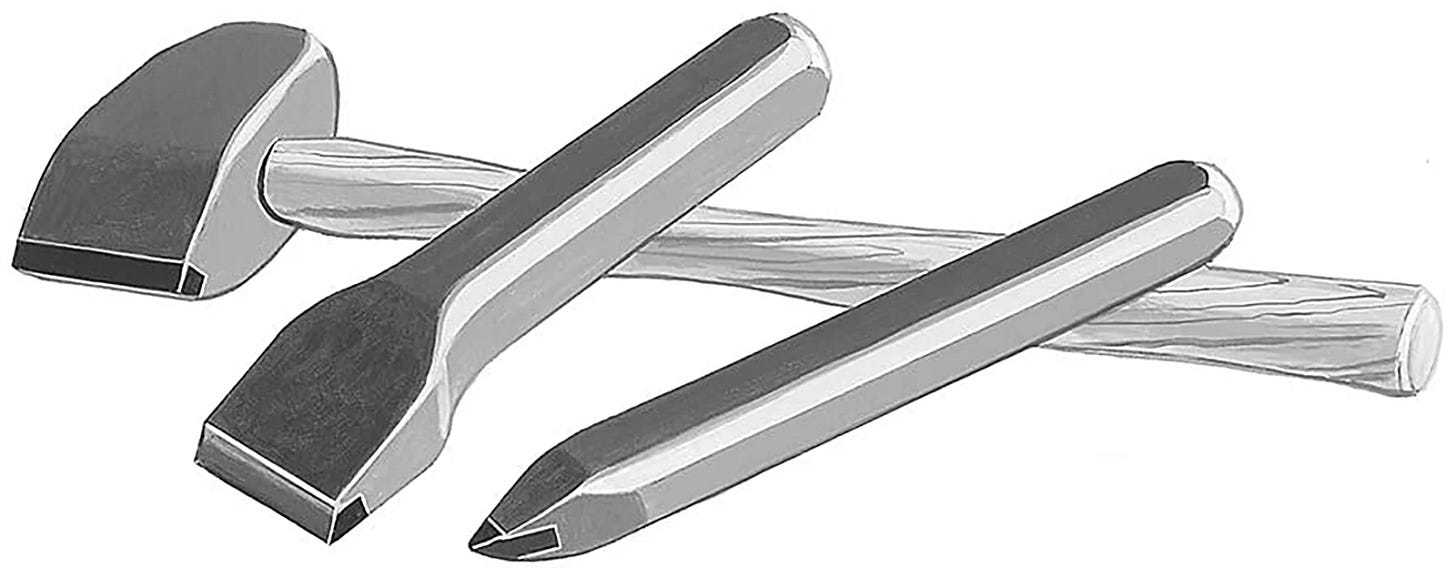Shaping Stones vs. Shaping Self: The Divergence of Operative and Speculative Masonry
Decoding the Shift From Operative to Speculative Masonry
Freemasonry is steeped in symbolic rituals and metaphors that contain hidden wisdom. On the surface, these rituals involve visible tools and gestures. But their deeper significance is veiled in allegory.
Let's examine a common phrase from our Masonic ritual:
"We are not, however, here assembled as operative, but rather as Free and Accepted, or Speculative Masons, and to us these tools are delivered as vehicles of moral instruction, and thus we apply them."
This dense passage encapsulates a key evolution in Freemasonry - the transition from operative masonry to speculative masonry.
Operative Masonry: Literal Stonework
In medieval times, operative masons physically built castles, cathedrals, and other stone structures. They worked tangibly with brick and mortar as stonemasons.
Operative masonry involved literal cutting, shaping, and laying of stone using real-world tools like the trowel, square, and compass. The work was practical, visible, and produced material results.
Speculative Masonry: Abstract Self-Improvement
Over time, Freemasonry shifted from literal stonemasonry to "speculative" masonry - focused on self-improvement through abstract symbols rather than hands-on labor.
Speculative Masons interpret metaphors and contemplate virtues. They apply lessons metaphorically to build inner character. The "work" becomes intangible - perfecting oneself morally and spiritually.
Speculation implies pondering meanings. But importantly, speculative Masons still apply lessons actively through self-betterment. Though not literally constructing buildings, they build temples of wisdom, ethics, and truth within.
Tools Reborn as Vehicles of Moral Instruction
Critically, the excerpt shows how operative tools are "delivered to us" for new metaphorical purposes in speculative Masonry.
Whereas operative masons used the literal trowel, square, and compass to shape stone, speculative Masons use them as symbols to shape the self. The tools evolve into "vehicles of moral instruction."
For instance, the square's old function was measuring angles precisely. Its speculative function is regulating one's moral uprightness. The compass physically draws circles but now represents acting within reasonable limits.
These once-practical tools are reborn as conveyors of virtue. Their tangible forms teach intangible lessons allegorically. This exemplifies Masonry's multilayered symbolism.
Conclusion: The Allegorical Veil of Secrecy
In short, Masonic rituals use familiar motions and tools that hide deeper significance. Their surface actions symbolize inner teachings. This reflects a core Masonic tenet - its rituals are "veiled in allegory," obscuring esoteric wisdom.
Like an iceberg, the visible ritual is only a fraction of the concealed meaning underneath. Properly interpreted, the allegorical veil reveals profound lessons for speculative Masons seeking self-improvement through esoteric wisdom.




